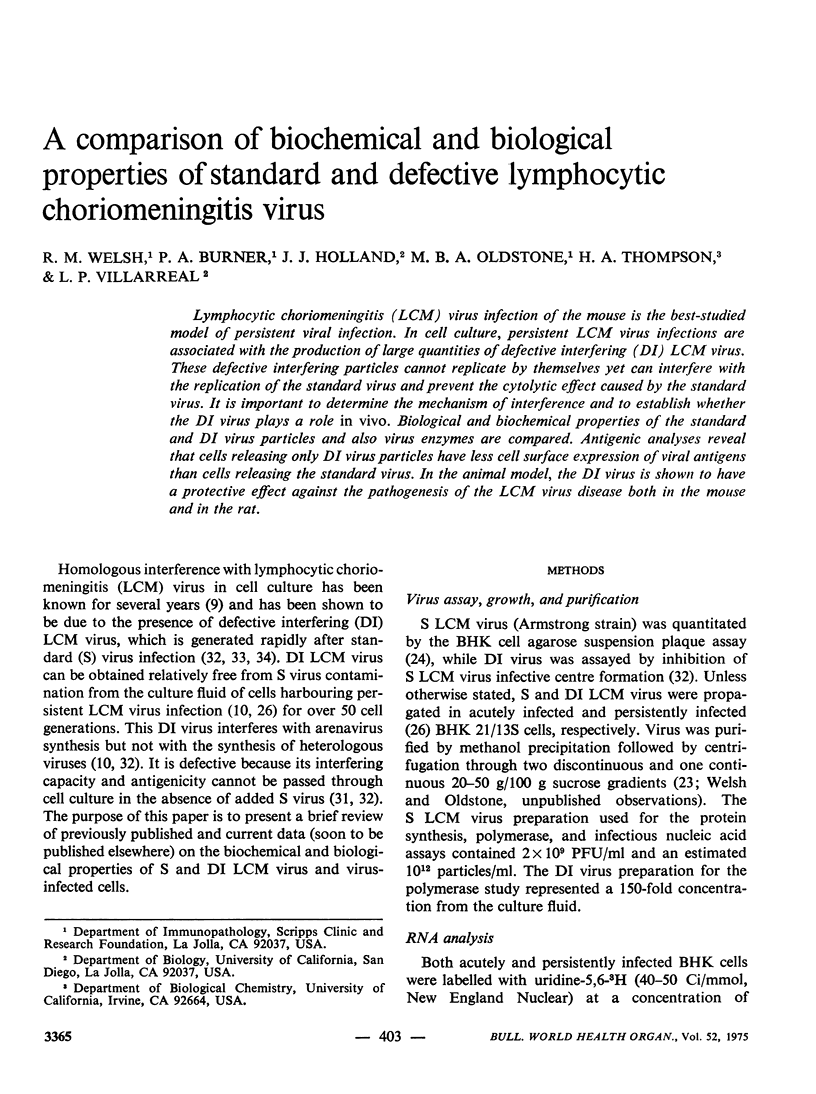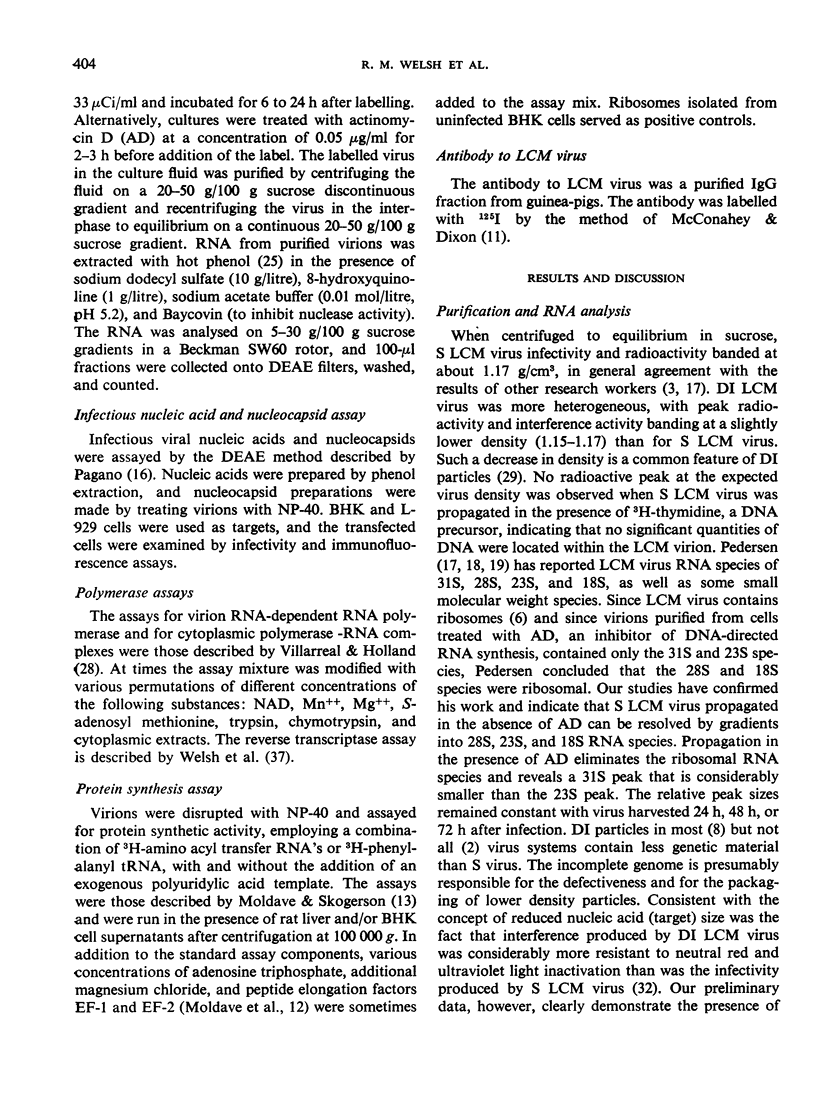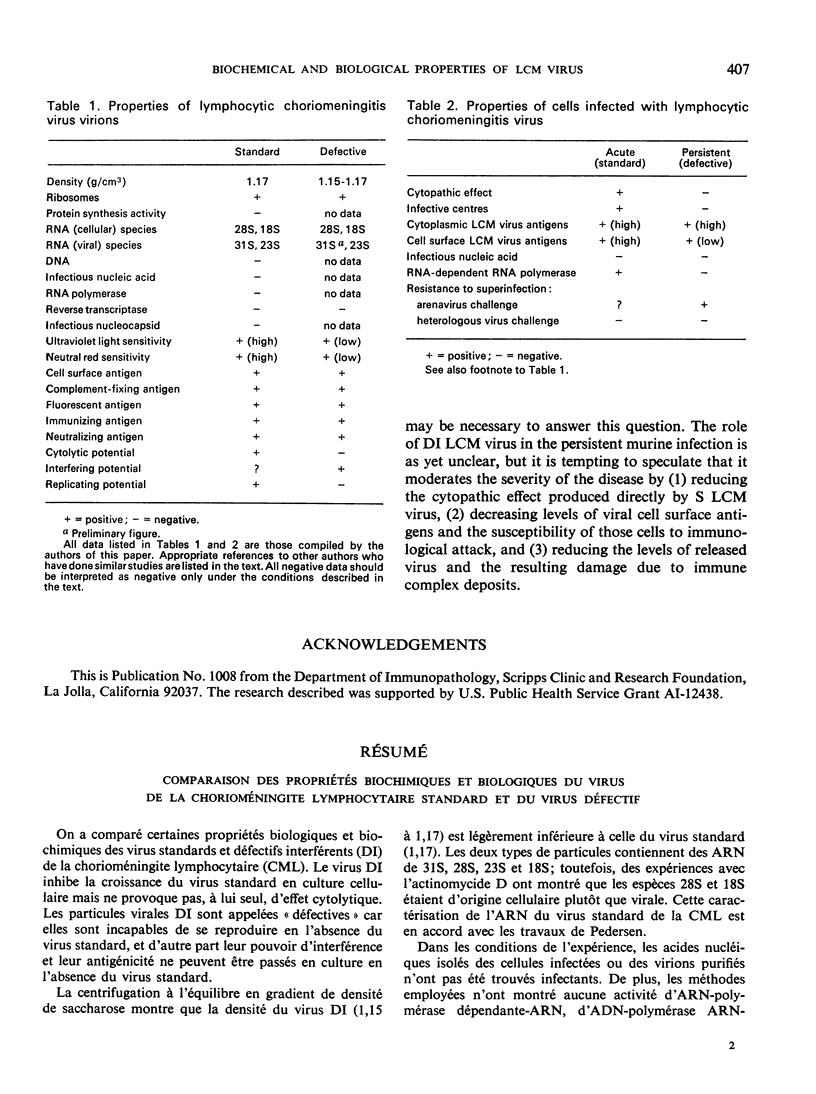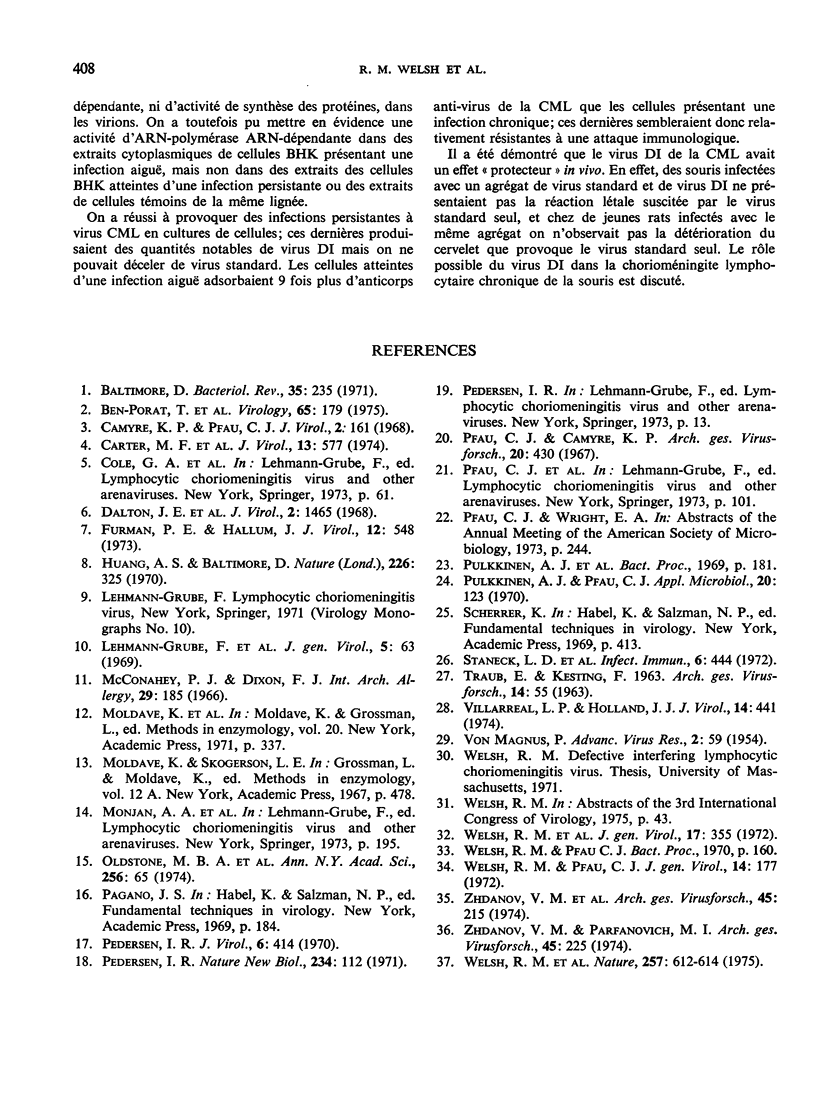Abstract
Lymphocytic choriomeningitis (LCM) virus infection of the mouse is the best-studied model of persistent viral infection. In cell culture, persistent LCM virus infections are associated with the production of large quantities of defective interfering (DI) LCM virus. These defective interfering particles cannot replicate by themselves yet can interfere with the replication of the standard virus and prevent the cytolytic effect caused by the standard virus. It is important to determine the mechanism of interference and to establish whether the DI virus plays a role in vivo. Biological and biochemical properties of the standard and DI virus particles and also virus enzymes are compared. Antigenic analyses reveal that cells releasing only DI virus particles have less cell surface expression of viral antigens than cells releasing the standard virus. In the animal model, the DI virus is shown to have a protective effect against the pathogenesis of the LCM virus disease both in the mouse and in the rat.
Full text
PDF





Selected References
These references are in PubMed. This may not be the complete list of references from this article.
- Baltimore D. Expression of animal virus genomes. Bacteriol Rev. 1971 Sep;35(3):235–241. doi: 10.1128/br.35.3.235-241.1971. [DOI] [PMC free article] [PubMed] [Google Scholar]
- Ben-Porat T., Lonis B., Kaplan A. S. Further characterization of A population of defective, interfering pseudorabies virions. Virology. 1975 May;65(1):179–186. doi: 10.1016/0042-6822(75)90018-5. [DOI] [PubMed] [Google Scholar]
- Camyre K. P., Pfau C. J. Biophysical and biochemical characterization of lymphocytic choriomeningitis virus. IV. Strain differences. J Virol. 1968 Mar;2(3):161–166. doi: 10.1128/jvi.2.3.161-166.1968. [DOI] [PMC free article] [PubMed] [Google Scholar]
- Carter M. F., Biswal N., Rawls W. E. Polymerase activity of Pichinde virus. J Virol. 1974 Mar;13(3):577–583. doi: 10.1128/jvi.13.3.577-583.1974. [DOI] [PMC free article] [PubMed] [Google Scholar]
- Furman P. A., Hallum J. V. RNA-dependent DNA polymerase activity in preparations of a mutant of Newcastle disease virus arising from persistently infected L cells. J Virol. 1973 Sep;12(3):548–555. doi: 10.1128/jvi.12.3.548-555.1973. [DOI] [PMC free article] [PubMed] [Google Scholar]
- Huang A. S., Baltimore D. Defective viral particles and viral disease processes. Nature. 1970 Apr 25;226(5243):325–327. doi: 10.1038/226325a0. [DOI] [PubMed] [Google Scholar]
- McConahey P. J., Dixon F. J. A method of trace iodination of proteins for immunologic studies. Int Arch Allergy Appl Immunol. 1966;29(2):185–189. doi: 10.1159/000229699. [DOI] [PubMed] [Google Scholar]
- Pedersen I. R. Density gradient centrifugation studies on lymphocytic choriomeningitis virus and on viral ribonucleic acid. J Virol. 1970 Oct;6(4):414–420. doi: 10.1128/jvi.6.4.414-420.1970. [DOI] [PMC free article] [PubMed] [Google Scholar]
- Pedersen I. R. Lymphocytic choriomeningitis virus RNAs. Nat New Biol. 1971 Nov 24;234(47):112–114. doi: 10.1038/newbio234112a0. [DOI] [PubMed] [Google Scholar]
- Pfau C. J., Camyre K. P. Biophysical and biochemical characterization of lymphocytic choriomeningitis virus. 3. Thermal and ultrasonic sensitivity. Arch Gesamte Virusforsch. 1967;20(4):430–437. doi: 10.1007/BF01275223. [DOI] [PubMed] [Google Scholar]
- Pulkkinen A. J., Pfau C. J. Plaque size heterogeneity: a genetic trait of lymphocytic choriomeningitis virus. Appl Microbiol. 1970 Jul;20(1):123–128. doi: 10.1128/am.20.1.123-128.1970. [DOI] [PMC free article] [PubMed] [Google Scholar]
- Staneck L. D., Trowbridge R. S., Welsh R. M., Wright E. A., Pfau C. J. Arenaviruses: cellular response to long-term in vitro infection with parana and lymphocytic choriomeningitis viruses. Infect Immun. 1972 Oct;6(4):444–450. doi: 10.1128/iai.6.4.444-450.1972. [DOI] [PMC free article] [PubMed] [Google Scholar]
- Villarreal L. P., Holland J. J. Transcribing complexes in cells infected by vesicular stomatitis virus and rabies virus. J Virol. 1974 Sep;14(3):441–450. doi: 10.1128/jvi.14.3.441-450.1974. [DOI] [PMC free article] [PubMed] [Google Scholar]
- Welsh R. M., Jr, Cooper N. R., Jensen F. C., Oldstone M. B. Human serum lyses RNA tumour viruses. Nature. 1975 Oct 16;257(5527):612–614. doi: 10.1038/257612a0. [DOI] [PubMed] [Google Scholar]
- Welsh R. M., O'Connell C. M., Pfau C. J. Properties of defective lymphocytic choriomeningitis virus. J Gen Virol. 1972 Dec;17(3):355–359. doi: 10.1099/0022-1317-17-3-355. [DOI] [PubMed] [Google Scholar]
- Welsh R. M., Pfau C. J. Determinants of lymphocytic choriomeningitis interference. J Gen Virol. 1972 Feb;14(2):177–187. doi: 10.1099/0022-1317-14-2-177. [DOI] [PubMed] [Google Scholar]
- Zhdanov V. M., Bogomolova N. N., Gavrilov V. I., Andzhaparidze O. G., Deryabin P. G., Astakhova A. N. Infectious DNA of tick-borne encephalitis virus. Arch Gesamte Virusforsch. 1974;45(3):215–224. doi: 10.1007/BF01249684. [DOI] [PubMed] [Google Scholar]
- Zhdanov V. M., Parfanovich M. I. Integration of measles virus nucleic acid into the cell genome. Arch Gesamte Virusforsch. 1974;45(3):225–234. doi: 10.1007/BF01249685. [DOI] [PubMed] [Google Scholar]


